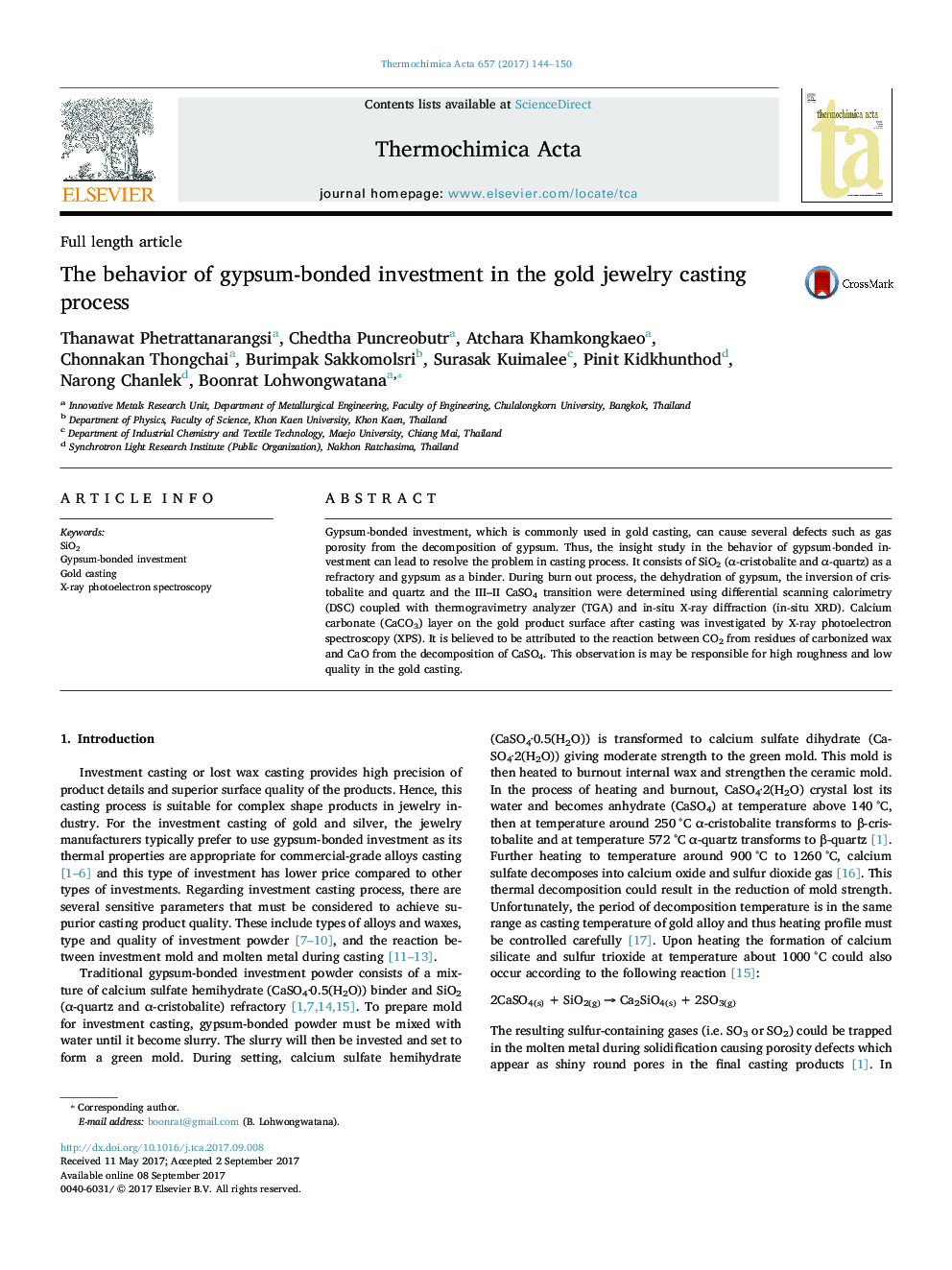| Article ID | Journal | Published Year | Pages | File Type |
|---|---|---|---|---|
| 4995818 | Thermochimica Acta | 2017 | 7 Pages |
Gypsum-bonded investment, which is commonly used in gold casting, can cause several defects such as gas porosity from the decomposition of gypsum. Thus, the insight study in the behavior of gypsum-bonded investment can lead to resolve the problem in casting process. It consists of SiO2 (α-cristobalite and α-quartz) as a refractory and gypsum as a binder. During burn out process, the dehydration of gypsum, the inversion of cristobalite and quartz and the III-II CaSO4 transition were determined using differential scanning calorimetry (DSC) coupled with thermogravimetry analyzer (TGA) and in-situ X-ray diffraction (in-situ XRD). Calcium carbonate (CaCO3) layer on the gold product surface after casting was investigated by X-ray photoelectron spectroscopy (XPS). It is believed to be attributed to the reaction between CO2 from residues of carbonized wax and CaO from the decomposition of CaSO4. This observation is may be responsible for high roughness and low quality in the gold casting.
